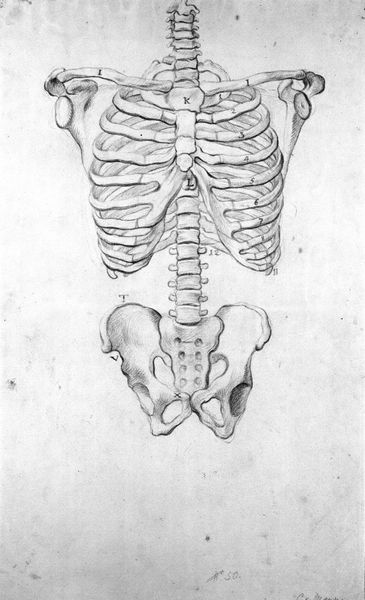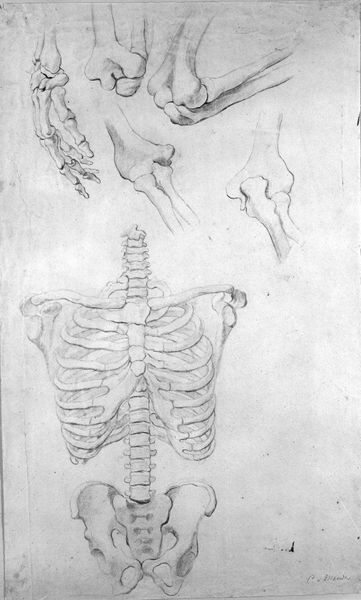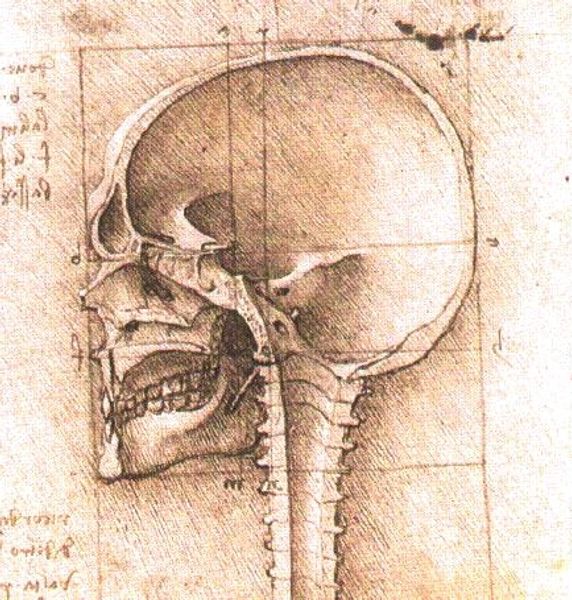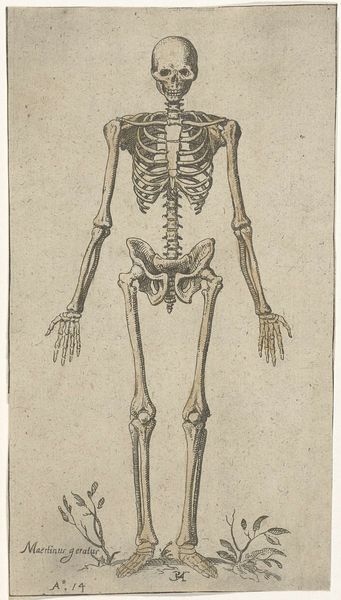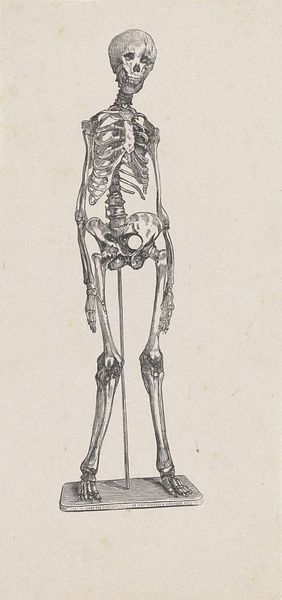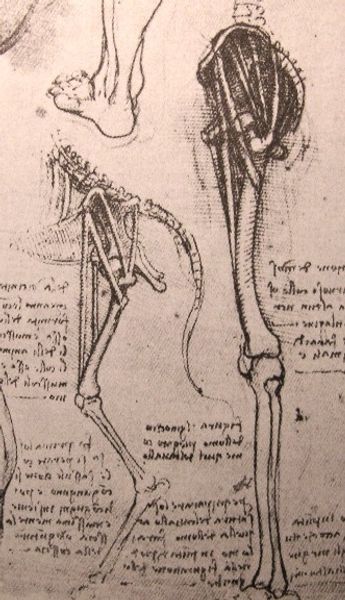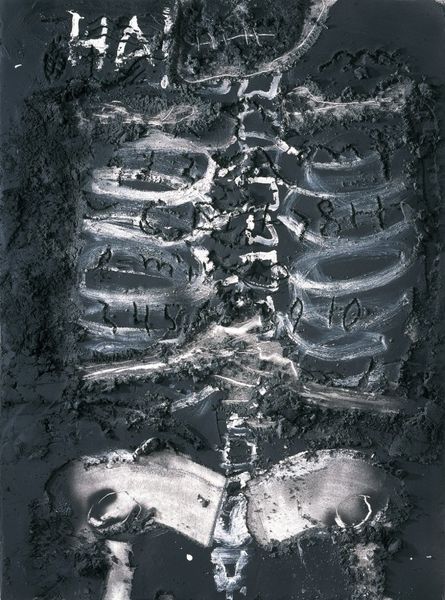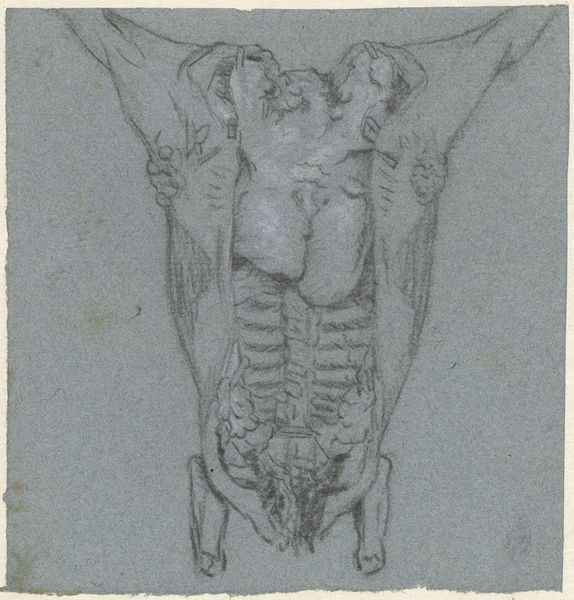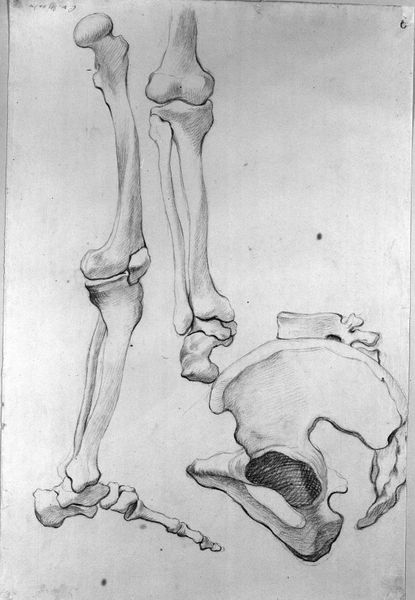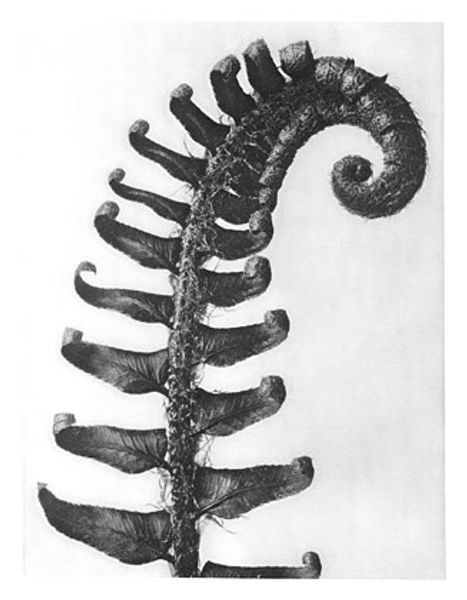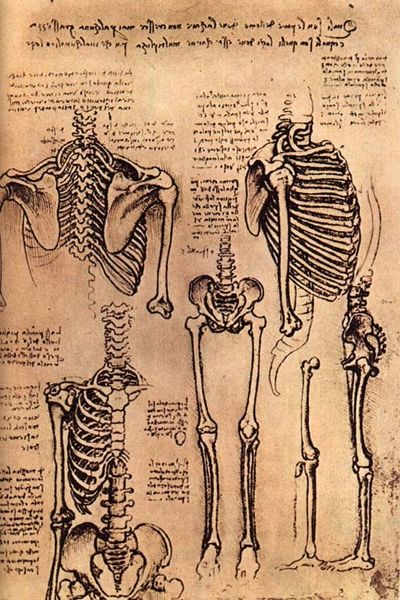
Rygrad med brystkasse og bækken, set bagfra. 1660 - 1663
0:00
0:00
drawing, dry-media, pencil
#
pencil drawn
#
drawing
#
pencil sketch
#
figuration
#
dry-media
#
sketchwork
#
pencil drawing
#
pencil
#
line
#
pencil work
#
academic-art
#
realism
Dimensions: 454 mm (height) x 294 mm (width) (bladmaal)
Editor: This pencil drawing, "Rygrad med brystkasse og bækken, set bagfra," or "Back view of a spine with ribcage and pelvis" by Karel van Mander III, created between 1660 and 1663, strikes me as starkly vulnerable. What strikes you when you view it? Curator: Vulnerability, certainly. But let's consider its historical context. Anatomical drawings like these were crucial to the development of medical knowledge and artistic representation in the 17th century. Think about who had access to this knowledge. The body, particularly dissected and studied, becomes a site of power, doesn’t it? Editor: Power in what sense? The power of knowledge, or something more? Curator: Both. The ability to dissect and depict the body, particularly marginalized bodies, has historically been linked to systems of oppression and control. The male gaze defining whose bodies and identities are worthy of medical representation – and on what terms! Think about how often these studies are devoid of any markers of identity, turning the individual into a mere object of scientific inquiry. Does seeing the skeleton like this prompt a sense of universality, or perhaps erasure? Editor: I see your point. The lack of identifying features could strip the person of their individuality, their identity. Yet, aren't skeletons universal symbols of mortality? Curator: Absolutely. But consider the narratives we attach to mortality. Are all deaths grieved equally? Whose stories are remembered and whose are forgotten? Reflect on the fact that in Mander’s time, access to the tools of representation, of anatomical study, was often determined by gender, race, and class. Editor: It's a fascinating, if unsettling, perspective. I will view art differently from now on. Curator: Art holds such power. It enables us to look beneath surfaces, question hidden agendas and connect the history of bodies to societal biases.
Comments
No comments
Be the first to comment and join the conversation on the ultimate creative platform.
